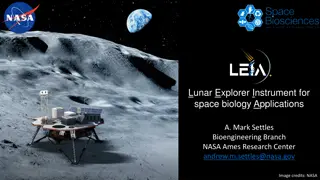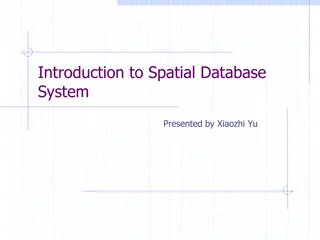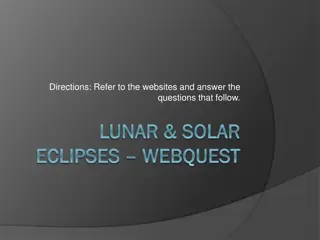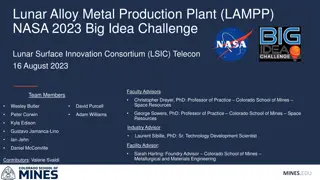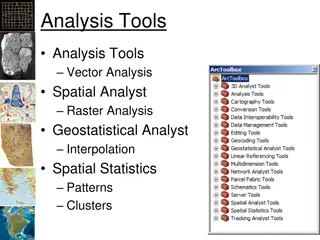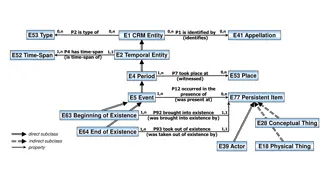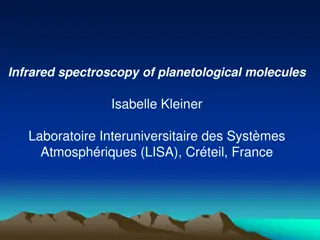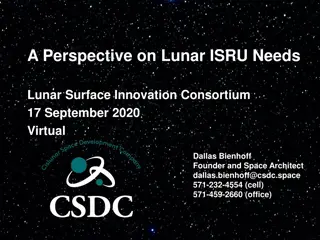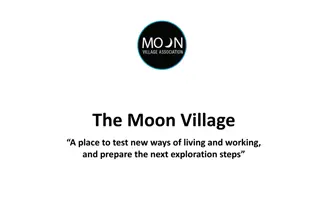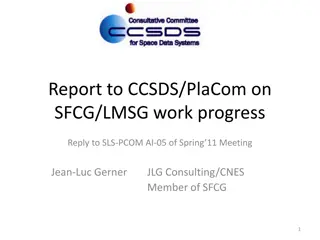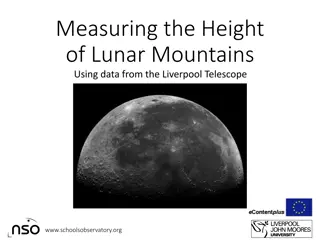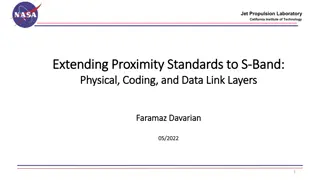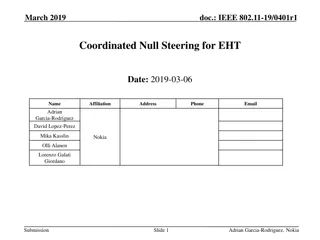Initiating a Lunar Planetary Spatial Data Infrastructure (PSDI) by MAPSIT Steering Committee
MAPSIT, led by Trent Hare of USGS, advocates for creating a Lunar PSDI to enhance spatial data infrastructure in planetary science. The committee highlights the importance of foundational lunar data products and ongoing efforts for Europa and the Moon. Collaboration with various entities is emphasized to ensure the success of establishing a Lunar SDI.
Download Presentation

Please find below an Image/Link to download the presentation.
The content on the website is provided AS IS for your information and personal use only. It may not be sold, licensed, or shared on other websites without obtaining consent from the author.If you encounter any issues during the download, it is possible that the publisher has removed the file from their server.
You are allowed to download the files provided on this website for personal or commercial use, subject to the condition that they are used lawfully. All files are the property of their respective owners.
The content on the website is provided AS IS for your information and personal use only. It may not be sold, licensed, or shared on other websites without obtaining consent from the author.
E N D
Presentation Transcript
Initiating a lunar PSDI Initiating a lunar PSDI (Planetary Spatial Data (Planetary Spatial Data Infrastructure) Infrastructure) Trent Hare, USGS and Mapping and Planetary Spatial Infrastructure Team (MAPSIT)
Who we are: MAPSIT Steering Committee Trent Hare (USGS) Brad Thomson (Univ. Tennessee), Chair Jay Laura (USGS) Julie Stopar (LPI), Vice Chair Pete Mouginis-Mark (Univ. Hawaii) Brent Archinal (USGS) Andrea Na (DLR, Germany) Ross Beyer (SETI/NASA Ames) Alex Patthoff (PSI) Dani DellaGiustina (Univ. Arizona) Jani Radebaugh (Brigham Young Univ.), past Chair Caleb Fassett (NASA/Marshall), retiring 2021 Sarah Sutton (Univ. Arizona) Lisa Gaddis (LPI), retiring 2021 David Williams (Arizona State Univ.) Sander Goossens (NASA Goddard) Justin Hagerty (USGS) 3/02/21 2
MAPSIT Findings presented to PAC Progress on PSDI creation (Planetary Data Spatial Infrastructure) MAPSIT encourages the continued development of a Europa PSDI, which is currently underway. In line with MAPSIT s Roadmap, MAPSIT applauds the creation of a part of preliminary PSDI for Io (Williams et al., 2021 LPSC). A reminder from Laura et al. (2018) ESS: Spatial data infrastructure (SDI) is the enabling collection of (1) spatial data users, (2) data interoperability agreements, (3) policies and standards, (4) data access mechanisms, and (5) the spatial data themselves (Rajabifard et al., 2002). In the context of planetary science, spatial data are any data with a spatial component including visible and infrared sensor data, radar data, spectrometer data, and even data such as the Apollo samples that include collection location information. 3/02/21 3
MAPSIT Findings presented to PAC MAPSIT encourages the creation of a PSDI for the Moon, in collaboration with LEAG, LSIC, and other appropriate parties. With numerous lunar efforts from NASA, the commercial sector, and other space agencies underway, now is the ideal time to establish a lunar SDI that benefits all. Similar to MAPSIT finding presented in Nov. 2020. Note the workload required to create a lunar SDI will be non-trivial; will likely have to proceed as a funded effort rather than staffed via volunteers on a best-effort basis. 3/02/21 4
PSDI Theme 1 PSDI Theme 1 Foundational Data Products Foundational Data Products Both existing lunar foundational data sets and framework data products (e.g., geology, mineralogy, feature catalogs) are available to help build a lunar SDI. Next, we enumerate the currently available lunar foundational data sets in order of increasing spatial resolution. A more complete list for lunar data is given in Laura and Beyer (2021). Laura J. R. and R. A. Beyer (2021) Knowledge Inventory of Foundational Data Products in Planetary Science, The Planetary Science Journal, 2(18), doi:10.3847/PSJ/abcb94. 3/02/21 5
Foundational Data Products (examples) Foundational Data Products (examples) LOLA defines a lunar geodetic coordinate reference frame and global topography. Spatial resolution depends on location, but global extent is good at ~60 m/pixel and conservatively the absolute horizontal uncertainty up to ~20 m with a vert. uncertainty of ~1 m, by Goddard. released by PDS LROC NAC polar controlled mosaics, 85.5 N and 90 N and 85.5 S and 90 S, 1 m/pixel, created by USGS in 2011, released by JPL Moon Trek LROC NAC allows for stereo-derived topography and orthorectified images, very sparse coverage, 0.5 to 2 m/pixel, ASU, UofA, USGS and others, released by PDS and JPL s Moon Trek Note while there are many other products which are qualitatively of exceptional accuracy, but they cannot be identified as foundational using the strict PSDI definition because their uncertainties are undetermined. 3/02/21 6
PSDI Theme 2 PSDI Theme 2 Data Access and Metadata Data Access and Metadata A priority goal for any lunar SDI would be to design and maintain a strategic investment in lunar data access that transcends individual missions. This includes goals for deploying a lunar SDI catalog/registry for the discovery of existing data products and the development of standards and best practices on how to characterize, capture, and represent uncertainty and distortion within each products metadata. Example of an optional task a lunar SDI could support Geospatially link features (e.g., Malapert crater, Shackleton crater) to relevant published research to improve ease of access and searchability. 3/02/21 7
PSDI Theme 3 PSDI Theme 3 Standards Standards A lunar SDI should also define goals to support standards e.g., Updating of lunar coordinate system and orientation standards, as recommended by the Artemis III SDT [9, Rec. 8.2-1]. The promotion of common data formats for interoperability between different applications and facilities. The establishment of cartographic standards (e.g., symbologies) for engineering elements required for exploration zones Defining standards and best practices for converting, distributing, visualizing, and archiving temporal data sets (e.g., 3D + time). 3/02/21 8
PSDI Theme 4 PSDI Theme 4 Policies Policies A lunar SDI should establish responsibilities and policies established by a lunar SDI working group (WG). An example charter might include: A body through which the WG is chartered (e.g., NASA, LEAG, MAPSIT, etc.) to integrate and manage lunar SDI efforts. Rules by which to operate (e.g., by consensus ), commonly agreed upon procedures for making decisions and findings, and an understanding that all decisions and/or recommendations will be communicated to the chartering body. 3/02/21 9
PSDI Theme 5 PSDI Theme 5 User Community User Community A lunar SDI should prioritize to fostering a community of practice to support lunar SDI coordination, technical task execution, and sharing of knowledge and capabilities. This includes providing guidance to self- moderated citizen science initiatives and public outreach efforts to aid them in processing data and publishing any analysis-ready data (ARD) sets supplied in standardized formats with appropriate metadata. 3/02/21 10



